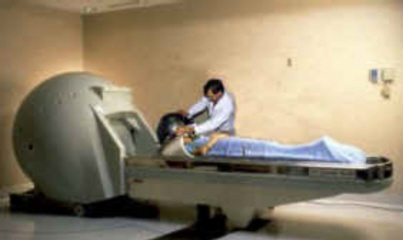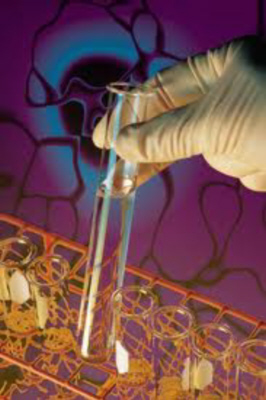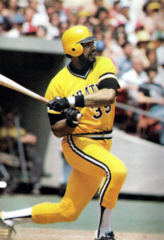���� ������������������������������������������������������������������������������������������������������������������������������
26th August 2013 - New research
NAVAJO HAVE ONE OF THE HIGHEST PREVALENCES OF PARKINSON'S DISEASE
Journal of Parkinson's Disease [2013]
3 (2) : 193-198 (P.H.Gordon, H.Zhao, D.Bartley, L.J.Sims, M.G.Begay, S.
Pirio Richardson, J.Lewis, A.S.Rowland)�
Complete abstract
The Navajo Indians have been found to have onnne
of the world's highest prevalences of Prakinson's Disease. The prevalence of
Parkinson's Disease amongst the Navajo Indians is 336 per 100,000.
 These
figures are higher than for any U.S. state with Nebraska having the highest
prevalence at� 329 per 100,000.
Amongst Navajo men it is even higher at 438 per 100,000. The Navajo
are concentrated in Arizona and New Mexico in the USA.
For more information go too
Navajo.
Native Americans, including American Indian and Alaska Native peoples as
a whole have an even higher prevalence rate of 355 per 100,000. It is not
known why the prevalence is so high amongst Native Americans.
For more information
concerning prevalence go to
Prevalence of Parkinson's Disease. For a printable version of this article
click here.
In order to refer to this article on its own
click here.���
These
figures are higher than for any U.S. state with Nebraska having the highest
prevalence at� 329 per 100,000.
Amongst Navajo men it is even higher at 438 per 100,000. The Navajo
are concentrated in Arizona and New Mexico in the USA.
For more information go too
Navajo.
Native Americans, including American Indian and Alaska Native peoples as
a whole have an even higher prevalence rate of 355 per 100,000. It is not
known why the prevalence is so high amongst Native Americans.
For more information
concerning prevalence go to
Prevalence of Parkinson's Disease. For a printable version of this article
click here.
In order to refer to this article on its own
click here.���
�
24th August 2013 - News
report
LINDA RONSTADT DIAGNOSED WITH PARKINSON'S DISEASE
 The
American singer Linda Ronstadt has been diagnosed with Parkinson's Disease and
consequently can no longer sing. She won 11 Grammy Awards and has gold, platinum
and multiplatinum albums.� sing. For more information go to
Linda Ronstadt. Linda Ronstadt, who is
now 67, told AARP today that she was daignosed with Parkinson's Disease 8 months
ago and that she began to show symptoms 8 years ago. Linda Ronstadt now walks
with the aid of poles when on uneven ground and uses a wheelchair when she
travels. However, her soon to be published autobiography makes no mention of her
having Parkinson's Disease. For more information
go to
AARP.
The
American singer Linda Ronstadt has been diagnosed with Parkinson's Disease and
consequently can no longer sing. She won 11 Grammy Awards and has gold, platinum
and multiplatinum albums.� sing. For more information go to
Linda Ronstadt. Linda Ronstadt, who is
now 67, told AARP today that she was daignosed with Parkinson's Disease 8 months
ago and that she began to show symptoms 8 years ago. Linda Ronstadt now walks
with the aid of poles when on uneven ground and uses a wheelchair when she
travels. However, her soon to be published autobiography makes no mention of her
having Parkinson's Disease. For more information
go to
AARP.
���������������������������������������������������������������������������������������������������������������������������������������������������������������������������������
23rd August 2013 - New book
YOGA AND PARKINSON'S DISEASE
Peggy Van Hulsteyn
 Publisher's
description : Yoga and Parkinson's Disease is a practical guide to using yoga to
manage stress, improve mental alertness, increase flexibility, correct posture
and improve the quality-of-life of readers with Parkinson's. It follows the
author's own experience and research studies in the subject that have shown a
correlation between yoga practice and better health and outcomes after a
Parkinson's Disease diagnosis. The book is a deeply soothing form of moving
meditation and physical activity that is a safe way to rebuild strength,
stamina, and flexibility. It shows how yoga ameliorates difficulties that
accompany Parkinson's, including mobility, range of motion, and balance.
Click here for more details. For
more books concerning Parkinson's Disease go to
Parkinson's Disease Books.
Publisher's
description : Yoga and Parkinson's Disease is a practical guide to using yoga to
manage stress, improve mental alertness, increase flexibility, correct posture
and improve the quality-of-life of readers with Parkinson's. It follows the
author's own experience and research studies in the subject that have shown a
correlation between yoga practice and better health and outcomes after a
Parkinson's Disease diagnosis. The book is a deeply soothing form of moving
meditation and physical activity that is a safe way to rebuild strength,
stamina, and flexibility. It shows how yoga ameliorates difficulties that
accompany Parkinson's, including mobility, range of motion, and balance.
Click here for more details. For
more books concerning Parkinson's Disease go to
Parkinson's Disease Books.
�
18th August 2013 - New research
THE EFFECT OF GAMMA KNIFE THALAMOTOMY ON TREMOR
Journal of Neurosurgery [2013] 118 (4) : 713-718 (A.Kooshkabadi, L.D.Lunsford,
D.Tonetti, J.C.Flickinger, D.Kondziolka)
Complete abstract
������������������������������������������������������������������������������������������������������������������������������������������������������������������������������������� The surgical management of disabling tremor has gained renewed vigour with the
availability of deep brain stimulation. However, in the face of an aging
population of patients with increasing surgical comorbidities, noninvasive
approaches for tremor management have gained interest. Researchers evaluated
outcomes in people who underwent a unilateral Gamma Knife thalamotomy (GKT) for
tremor.
 Gamma
Knife radiosurgical thalamotomy is a technique in which a thalamotomy is
performed with beams of radiation rather than a surgical incision or use of
electrodes. The surgeon uses a Gamma Knife device to focus high-energy gamma
rays precisely on an area in the brain that causes tremor. These rays result
in the death of the brain cells that generate tremor. The procedure takes
approximately one hour and the benefit may not be apparent until three to
six weeks afterwards. For more information go
to
Gamma knife surgery.
Gamma
Knife radiosurgical thalamotomy is a technique in which a thalamotomy is
performed with beams of radiation rather than a surgical incision or use of
electrodes. The surgeon uses a Gamma Knife device to focus high-energy gamma
rays precisely on an area in the brain that causes tremor. These rays result
in the death of the brain cells that generate tremor. The procedure takes
approximately one hour and the benefit may not be apparent until three to
six weeks afterwards. For more information go
to
Gamma knife surgery.
The tremor was related to either essential tremor, Parkinson's Disease or
multiple sclerosis.
The Fahn-Tolosa-Marin clinical tremor rating scale was used to grade tremor,
handwriting, and ability to drink. After Gamma Knife thalamotomy : the average tremor score reduced from 3.3 to
1.8,� the average handwriting score reduced from
2.8 to 1.6,� the average drinking score reduced from 3.1 to 1.8. After Gamma
Knife thalamotomy : 66% of patients showed improvement in all 3 scores, 13% of
patients showed improvement in 2 scores, 2% of patients showed improvement in just 1 score,
and 19% of patients failed to improve in any of the three scores..
For a printable version of this articlee
click here.
In order to refer to this article on its own
click here.���
�
13th August 2013 - New research
BIOMARKERS FAIL TO DIAGNOSE PARKINSON'S DISEASE
BMC Neurology [2013] Apr 12
[Epub ahead of print] (D.J.McGhee, P.L.Royle, P.A.Thompson,
D.E.Wright, J.P.Zajicek, C.E.Counsell)
Complete abstract
It had previously been assumed that biomarkers could be an effective means
of diagnosing Parkinson's Disease. However, an evaluation of all the methods
assessed suggest that the use of biomarkers is insufficient. A biomarker is a substance used as an indicator of a biological state or
illness.
For more information go to
Biomarkers.
 A
systematic review was undertaken to determine which biomarkers for disease
progression in Parkinson's Disease exist. 183 studies were included. The
sensitivity of the tests was an average of 71%, which is insufficient for
Parkinson's Disease diagnosis. However, the range in sensitivity was between
51% and 86% showing that some of the methods were closer to having a
practical use but were still less accurate than other methods of diagnosing
Parkinson's Disease that are available. The authors found insufficient
evidence to recommend the use of any biomarker for assessing disease
progression in Parkinson's Disease clinical trials. They believe that this
may simply reflect the poor quality of research in this area. They therefore
present a provisional 'roadmap' for conducting future disease progression
biomarker studies and recommend new quality criteria by which future studies
may be judged.
For a printable
version of this article
click here.
In order to refer to this article on its own
click here.���
A
systematic review was undertaken to determine which biomarkers for disease
progression in Parkinson's Disease exist. 183 studies were included. The
sensitivity of the tests was an average of 71%, which is insufficient for
Parkinson's Disease diagnosis. However, the range in sensitivity was between
51% and 86% showing that some of the methods were closer to having a
practical use but were still less accurate than other methods of diagnosing
Parkinson's Disease that are available. The authors found insufficient
evidence to recommend the use of any biomarker for assessing disease
progression in Parkinson's Disease clinical trials. They believe that this
may simply reflect the poor quality of research in this area. They therefore
present a provisional 'roadmap' for conducting future disease progression
biomarker studies and recommend new quality criteria by which future studies
may be judged.
For a printable
version of this article
click here.
In order to refer to this article on its own
click here.���
�
8th August 2013 - New research
DIABETIC DRUG TO TREAT PARKINSON'S DISEASE
Journal of Clinical Investigation [2013] 123 (6) : 2730-2736 (I.Aviles-Olmos,
J.Dickson, Z.Kefalopoulou, A. Djamshidian, P.Ell, T.Soderlund, P.Whitton,
R.Wyse, T.Isaacs, A.Lees, P.Limousin, T.Foltynie)
Complete abstract
Exenatide, which is a type 2 diabetes treatment, has been found in clinical
trials to improve Parkinson's Disease. Exentaide was previously found to have
neuroprotective and neurorestorative properties. Exenatide differs
in pharmacological action
and chemical structure
from insulin. For more information go to
Exenatide
 People
with moderate Parkinson's Disease received subcutaneous injections of
Exenatide for a year.� Their Parkinson's Disease was compared after
overnight withdrawal of conventional Parkinson's Disease medication using
the Unified Parkinson's Disease Rating Scale (UPDRS). Exenatide was well
tolerated but weight loss was common. There were clinically relevant
improvements in Parkinson's Disease� motor and cognitive measures.
Exenatide treated patients had a mean improvement after one year on the
UPDRS of 2.7 compared with a mean decline of 2.2 points in controls..
The authors do not
make suggestions as to how the diabetes drug has effect in Parkinson's
Disease. For a printable version of this article
click here. In order to
refer to this article on its own
click here.���
People
with moderate Parkinson's Disease received subcutaneous injections of
Exenatide for a year.� Their Parkinson's Disease was compared after
overnight withdrawal of conventional Parkinson's Disease medication using
the Unified Parkinson's Disease Rating Scale (UPDRS). Exenatide was well
tolerated but weight loss was common. There were clinically relevant
improvements in Parkinson's Disease� motor and cognitive measures.
Exenatide treated patients had a mean improvement after one year on the
UPDRS of 2.7 compared with a mean decline of 2.2 points in controls..
The authors do not
make suggestions as to how the diabetes drug has effect in Parkinson's
Disease. For a printable version of this article
click here. In order to
refer to this article on its own
click here.���
�
7th August 2013 - News release
BASEBALL STAR DIAGNOSED WITH PARKINSON'S DISEASE
 Dave
Parker, a two time winner of the baseball World Series has been diagnosed
with Parkinson's Disease. Dave Parker is a retired American baseball player.
He began his career in the Major League in 1973 with the Pittsburgh Pirates,
where he spent ten years. He went on to play with Cincinnati Reds, Oakland
Athletics, Milwaukee Brewers, California Angels, and Toronto Blue Jays. He
won the World Series twice, in 1979 and 1989. He retired from baseball in
1991. Now aged 62, he was first diagnosed with Parkinson's Disease early in
2012 but kept it quiet until now except for informing some close friends.
For the time being he is not taking any medication and is instead relying on
natural remedies. For more information concerning him go to
Dave Parker
Dave
Parker, a two time winner of the baseball World Series has been diagnosed
with Parkinson's Disease. Dave Parker is a retired American baseball player.
He began his career in the Major League in 1973 with the Pittsburgh Pirates,
where he spent ten years. He went on to play with Cincinnati Reds, Oakland
Athletics, Milwaukee Brewers, California Angels, and Toronto Blue Jays. He
won the World Series twice, in 1979 and 1989. He retired from baseball in
1991. Now aged 62, he was first diagnosed with Parkinson's Disease early in
2012 but kept it quiet until now except for informing some close friends.
For the time being he is not taking any medication and is instead relying on
natural remedies. For more information concerning him go to
Dave Parker
�
4th August 2013 - New research
CLINICAL TRIAL OF AFQ056 FOR DYSKINESIA
Movement Disorders [2013] July 11 [Epub ahead of print] (Stocchi F, Rascol O,
Destee A, Hattori N, Hauser RA, Lang AE, Poewe W, Stacy M, Tolosa E, Gao H,
Nagel J, Merschhemke M, Graf A, Kenney C, Trenkwalder C.)
Complete abstract
AFQ056 is a new glutamate receptor antagonist being developed for the
treatment of L-dopa induced dyskinesia. Dyskinesia is a difficulty or distortion
in performing voluntary movements, which often occurs as a side effect of long
term therapy with L-dopa. For more information go too
Dyskinesia. People with Parkinson's
Disease were given either 20mg, 50mg, 100mg, 150mg, or 200mg daily for 12 weeks.
The primary outcome in order to assess the effect on dyskinesia was the modified
Abnormal Involuntary Movements Scale.
Patients taking 200mg AFQ056 daily demonstrated significant improvements on
the modified Abnormal Involuntary Movements Scale. There was a dose-response
relationship, with 200 mg daily demonstrating the
 greatest effect.
However, no significant changes were observed on the
26-item Parkinson's Disease Dyskinesia Scale or the Patient's / Clinician's
Global Impression of Change. Unified Parkinson's Disease Rating Scale part III
scores were not significantly changed, indicating no worsening of motor
symptoms. The most common adverse events were dizziness, hallucination, fatigue, nasopharyngitis,
diarrhea, and insomnia. These results can guide the slection of doses for future
clinical trials.. For
a printable version of this article
click here.
In order to refer to this article on its own
click here.���
greatest effect.
However, no significant changes were observed on the
26-item Parkinson's Disease Dyskinesia Scale or the Patient's / Clinician's
Global Impression of Change. Unified Parkinson's Disease Rating Scale part III
scores were not significantly changed, indicating no worsening of motor
symptoms. The most common adverse events were dizziness, hallucination, fatigue, nasopharyngitis,
diarrhea, and insomnia. These results can guide the slection of doses for future
clinical trials.. For
a printable version of this article
click here.
In order to refer to this article on its own
click here.���
�
.gif)
.gif)
 These
figures are higher than for any U.S. state with Nebraska having the highest
prevalence at� 329 per 100,000.
Amongst Navajo men it is even higher at 438 per 100,000. The Navajo
are concentrated in Arizona and New Mexico in the USA.
For more information go too
These
figures are higher than for any U.S. state with Nebraska having the highest
prevalence at� 329 per 100,000.
Amongst Navajo men it is even higher at 438 per 100,000. The Navajo
are concentrated in Arizona and New Mexico in the USA.
For more information go too  The
American singer Linda Ronstadt has been diagnosed with Parkinson's Disease and
consequently can no longer sing. She won 11 Grammy Awards and has gold, platinum
and multiplatinum albums.� sing. For more information go to
The
American singer Linda Ronstadt has been diagnosed with Parkinson's Disease and
consequently can no longer sing. She won 11 Grammy Awards and has gold, platinum
and multiplatinum albums.� sing. For more information go to
 Publisher's
description : Yoga and Parkinson's Disease is a practical guide to using yoga to
manage stress, improve mental alertness, increase flexibility, correct posture
and improve the quality-of-life of readers with Parkinson's. It follows the
author's own experience and research studies in the subject that have shown a
correlation between yoga practice and better health and outcomes after a
Parkinson's Disease diagnosis. The book is a deeply soothing form of moving
meditation and physical activity that is a safe way to rebuild strength,
stamina, and flexibility. It shows how yoga ameliorates difficulties that
accompany Parkinson's, including mobility, range of motion, and balance.
Publisher's
description : Yoga and Parkinson's Disease is a practical guide to using yoga to
manage stress, improve mental alertness, increase flexibility, correct posture
and improve the quality-of-life of readers with Parkinson's. It follows the
author's own experience and research studies in the subject that have shown a
correlation between yoga practice and better health and outcomes after a
Parkinson's Disease diagnosis. The book is a deeply soothing form of moving
meditation and physical activity that is a safe way to rebuild strength,
stamina, and flexibility. It shows how yoga ameliorates difficulties that
accompany Parkinson's, including mobility, range of motion, and balance.
 Gamma
Knife radiosurgical thalamotomy is a technique in which a thalamotomy is
performed with beams of radiation rather than a surgical incision or use of
electrodes. The surgeon uses a Gamma Knife device to focus high-energy gamma
rays precisely on an area in the brain that causes tremor. These rays result
in the death of the brain cells that generate tremor. The procedure takes
approximately one hour and the benefit may not be apparent until three to
six weeks afterwards. For more information go
to
Gamma
Knife radiosurgical thalamotomy is a technique in which a thalamotomy is
performed with beams of radiation rather than a surgical incision or use of
electrodes. The surgeon uses a Gamma Knife device to focus high-energy gamma
rays precisely on an area in the brain that causes tremor. These rays result
in the death of the brain cells that generate tremor. The procedure takes
approximately one hour and the benefit may not be apparent until three to
six weeks afterwards. For more information go
to  A
systematic review was undertaken to determine which biomarkers for disease
progression in Parkinson's Disease exist. 183 studies were included. The
sensitivity of the tests was an average of 71%, which is insufficient for
Parkinson's Disease diagnosis. However, the range in sensitivity was between
51% and 86% showing that some of the methods were closer to having a
practical use but were still less accurate than other methods of diagnosing
Parkinson's Disease that are available. The authors found insufficient
evidence to recommend the use of any biomarker for assessing disease
progression in Parkinson's Disease clinical trials. They believe that this
may simply reflect the poor quality of research in this area. They therefore
present a provisional 'roadmap' for conducting future disease progression
biomarker studies and recommend new quality criteria by which future studies
may be judged.
For a printable
version of this article
A
systematic review was undertaken to determine which biomarkers for disease
progression in Parkinson's Disease exist. 183 studies were included. The
sensitivity of the tests was an average of 71%, which is insufficient for
Parkinson's Disease diagnosis. However, the range in sensitivity was between
51% and 86% showing that some of the methods were closer to having a
practical use but were still less accurate than other methods of diagnosing
Parkinson's Disease that are available. The authors found insufficient
evidence to recommend the use of any biomarker for assessing disease
progression in Parkinson's Disease clinical trials. They believe that this
may simply reflect the poor quality of research in this area. They therefore
present a provisional 'roadmap' for conducting future disease progression
biomarker studies and recommend new quality criteria by which future studies
may be judged.
For a printable
version of this article
 People
with moderate Parkinson's Disease received subcutaneous injections of
Exenatide for a year.� Their Parkinson's Disease was compared after
overnight withdrawal of conventional Parkinson's Disease medication using
the Unified Parkinson's Disease Rating Scale (UPDRS). Exenatide was well
tolerated but weight loss was common. There were clinically relevant
improvements in Parkinson's Disease� motor and cognitive measures.
Exenatide treated patients had a mean improvement after one year on the
UPDRS of 2.7 compared with a mean decline of 2.2 points in controls..
The authors do not
make suggestions as to how the diabetes drug has effect in Parkinson's
Disease. For a printable version of this article
People
with moderate Parkinson's Disease received subcutaneous injections of
Exenatide for a year.� Their Parkinson's Disease was compared after
overnight withdrawal of conventional Parkinson's Disease medication using
the Unified Parkinson's Disease Rating Scale (UPDRS). Exenatide was well
tolerated but weight loss was common. There were clinically relevant
improvements in Parkinson's Disease� motor and cognitive measures.
Exenatide treated patients had a mean improvement after one year on the
UPDRS of 2.7 compared with a mean decline of 2.2 points in controls..
The authors do not
make suggestions as to how the diabetes drug has effect in Parkinson's
Disease. For a printable version of this article
 Dave
Parker, a two time winner of the baseball World Series has been diagnosed
with Parkinson's Disease. Dave Parker is a retired American baseball player.
He began his career in the Major League in 1973 with the Pittsburgh Pirates,
where he spent ten years. He went on to play with Cincinnati Reds, Oakland
Athletics, Milwaukee Brewers, California Angels, and Toronto Blue Jays. He
won the World Series twice, in 1979 and 1989. He retired from baseball in
1991. Now aged 62, he was first diagnosed with Parkinson's Disease early in
2012 but kept it quiet until now except for informing some close friends.
For the time being he is not taking any medication and is instead relying on
natural remedies. For more information concerning him go to
Dave
Parker, a two time winner of the baseball World Series has been diagnosed
with Parkinson's Disease. Dave Parker is a retired American baseball player.
He began his career in the Major League in 1973 with the Pittsburgh Pirates,
where he spent ten years. He went on to play with Cincinnati Reds, Oakland
Athletics, Milwaukee Brewers, California Angels, and Toronto Blue Jays. He
won the World Series twice, in 1979 and 1989. He retired from baseball in
1991. Now aged 62, he was first diagnosed with Parkinson's Disease early in
2012 but kept it quiet until now except for informing some close friends.
For the time being he is not taking any medication and is instead relying on
natural remedies. For more information concerning him go to
 greatest effect.
However, no significant changes were observed on the
26-item Parkinson's Disease Dyskinesia Scale or the Patient's / Clinician's
Global Impression of Change. Unified Parkinson's Disease Rating Scale part III
scores were not significantly changed, indicating no worsening of motor
symptoms. The most common adverse events were dizziness, hallucination, fatigue, nasopharyngitis,
diarrhea, and insomnia. These results can guide the slection of doses for future
clinical trials.. For
a printable version of this article
greatest effect.
However, no significant changes were observed on the
26-item Parkinson's Disease Dyskinesia Scale or the Patient's / Clinician's
Global Impression of Change. Unified Parkinson's Disease Rating Scale part III
scores were not significantly changed, indicating no worsening of motor
symptoms. The most common adverse events were dizziness, hallucination, fatigue, nasopharyngitis,
diarrhea, and insomnia. These results can guide the slection of doses for future
clinical trials.. For
a printable version of this article